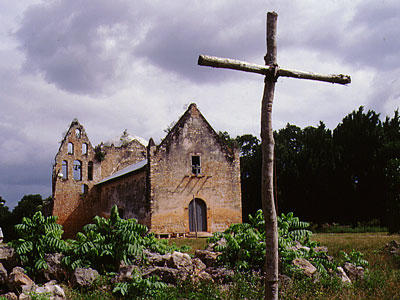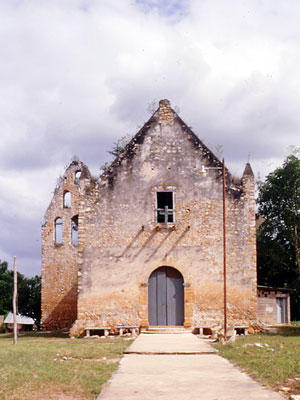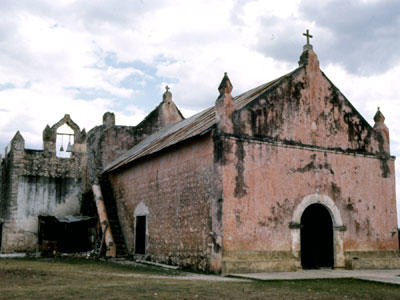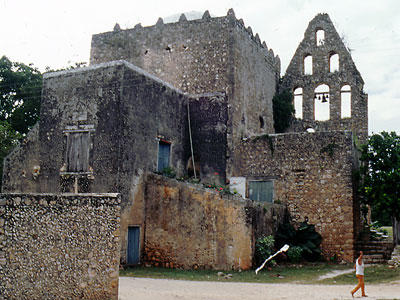Yucatán Indian Chapels
The “visiting” chapels created by the Spanish to evangelize the indigenous Maya populations in the Yucatán region of Mexico are known, collectively, as the Capillas de Indios, or Indian Chapels. Outposts of the principal Spanish missions, hundreds of these chapels were scattered throughout the vast region within small settlements, where a priest would periodically visit and perform mass and other religious rites. The chapels were built from the sixteenth through the eighteenth centuries, and were an innovative synthesis between the typologies of Christian and Maya places of worship. Most chapels had a domed sanctuary between a baptistery and sacristy, a belfry, mural paintings, and an open nave at times covered with a shed made of guano or thatch to function as a point of continuity for the community’s long-standing tradition of outdoor worship. During the nineteenth century, many of the settlements housing these chapels were abandoned. The structures remained mostly intact until the 1970s when preference for modern materials like concrete led to the demolition of many and insensitive restoration of others. These activities led to the destruction of countless murals and other decorative elements in the buildings.
1996 World Monuments Watch
The Yucatán Indian Chapels were included in the inaugural World Monuments Watch in 1996. Following Watch-listing, the chapel at Tibolón was chosen as a pilot restoration project. WMF secured funding from American Express, the Catholic Archdioceses of Yucatán, the Facultad de Arquitectura at the Universidad Autónoma de Yucatán, Fundación Cultural Yucatán, Cuerpos de Conservación Mexicanos, Partners of the Americas, and the office of the Counselor for Latino Affairs at the Smithsonian Institute to support the restoration. Architecture students from the Universidad Autónoma de Yucatán researched the evolution of the building, as well as the materials and construction techniques used in the different phases, then worked alongside community members to repair the chapel. The year-long project included the restoration of the outer walls, the two belfries, the sanctuary, mosaic floors, a bodega in the basement, and the hemispherical dome—a rare element in other visiting chapels in the region.
The Yucatán Indian Chapels are an innovative typology of colonial eclecticism and construction techniques mixed with the open-air nature of Maya worship. Greatly altered and sometimes abandoned or destroyed throughout the centuries, the remaining chapels are invaluable to the history of the Yucatán region. The restoration of the chapel at Tibolón works as a living example that the chapels can be restored for current and future use by local communities using local materials.




